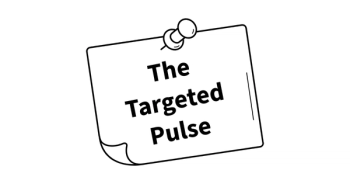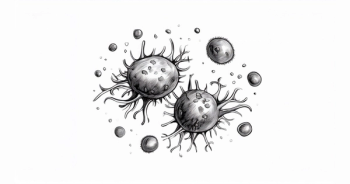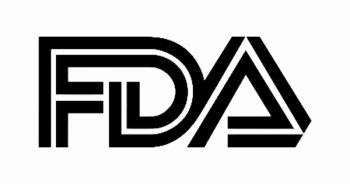
Linvoseltamab/Bortezomib Shows Consistent Safety in Relapsed/Refractory Multiple Myeloma
Linvoseltamab plus bortezomib showed a manageable safety profile and 85% ORR in relapsed/refractory multiple myeloma, with few discontinuations.
The combination of linvoseltamab, a BCMA x CD3 bispecific human monoclonal antibody, and bortezomib (Velcade) demonstrated a manageable safety profile in patients with relapsed/refractory multiple myeloma (RRMM), according to initial findings from the phase 1 LINKER-MM2 trial (NCT05137054). The results were presented at the
At a median follow-up of 9.3 months (range, 1.0-27.0), the regimen led to an objective response rate (ORR) of 85.0% in 17 of 20 patients (95% CI, 62.0%-97.0%) and a complete response rate of 50% (95% CI, 27.0%-73.0%).
“These are encouraging data in patients who were previously treated with proteasome inhibitors [PIs]… suggesting the combination is feasible,” Xavier P. Leleu, MD, PhD, professor and head, Department of Hematology, Hôpital La Miletrie, Poitiers, France, said during a presentation of the data.
The study included a dose-finding phase (n = 12), where patients received either 100 mg (n = 6) or 200 mg (n = 6) of linvoseltamab, and a dose-expansion phase (n = 12), where all patients received 200 mg of the BCMA-targeting agent. The primary end point was dose-limiting toxicity (DLT), and the incidence or severity of treatment-emergent adverse events (TEAEs). Secondary end points included ORR, duration of response (DOR), and progression-free survival (PFS).
Among patients who received the 100-mg dose, the ORR was 80.0% (95% CI, 28.0%-100.0%) at a median follow-up of 15.7 months. For those receiving the 200-mg dose, the ORR was 87.0% (95% CI, 60.0%-98.0%) at a median follow-up of 9.3 months. At 6 months, the DOR rate was 88% (95% CI, 59.0%-97.0%), and the PFS rate was 78.0% (95% CI, 52.0%-91.0%). All 5 evaluable patients achieved minimal residual disease negativity at a 10-5 threshold.
The median age was 69.0 years (range, 45.0-77.0) and 3 patients were 75 years or older. The majority of patients were White (70.8%), and had an ECOG performance status of 0 (58.3%). Patients were heavily pretreated with at least 3.0 lines of therapy (range, 2.0-9.0). All patients (n = 24) had been treated with at least 1 PI, which was either bortezomib (87.5%) or carfilzomib (Kyprolis; 70.8%). Fifteen patients (62.5%) were refractory to PI and 3 (12.5%) had been treated with bortezomib and 14 (58.3%) had been treated with carfilzomib.
Of 11 DLT-evaluable patients (5 patients at 100 mg, 6 patients at 200 mg), only one experienced a DLT—grade 3 cytomegalovirus reactivation, which was managed with a temporary treatment pause and antiviral therapy. The patient later resumed treatment.
“There was only 1 case of DLT, which was a grade 3 cytomegalovirus reactivation and managed with a temporary stop of linvoseltamab and administration of fanciclovir,” Leleu said. “The patient recovered and treatment resumed,” Leleu continued.
Reviewing the safety data, investigators reported 2 deaths, with 1 considered related to linvoseltamab. Overall, 3 (12.5%) patients discontinued treatment with linvoseltamab and 2 (8.3%) patients discontinued treatment with bortezomib. These discontinuations occurred in the 200-mg arm.
Overall, 23 (95.8%) patients experienced all-grade TEAEs; the most common hematological TEAEs were neutropenia and thrombocytopenia (both at 54.2%) and anemia (45.8%). The most common non-hematological all-grade TEAEs were cytokine release syndrome (CRS; 58.3%), diarrhea (41.7%), pyrexia (37.5%), and cough and nausea (33.3% each).
“Most incidents of CRS occurred prior to starting bortezomib and 1 patient experienced grade 1 CRS after cycle 0,” Leleu said. “Overall, 4 patients experienced symptoms related to immune effector cell-associated neurotoxicity syndrome but it was during cycle 0, during the step-up dose,” Leleu said.
In addition, 5 (21.0%) patients experienced neuropathy, which were less than grade 3. Eighteen (75.0%) patients reported all-grade infections, with 2 (8.3%) patients dying from infection.
“Most patients reached very good partial response after the first cycle and most patients reached complete response after cycle 6 or 7,” Leleu said.
The findings from the LINKER-MM2 trial show that the combination of linvoseltamab and bortezomib was safe with a generally consistent toxicity profile. “Linvoseltamab and bortezomib, we think, is a very interesting combination to develop in the future in larger studies,” Leleu concluded.










































